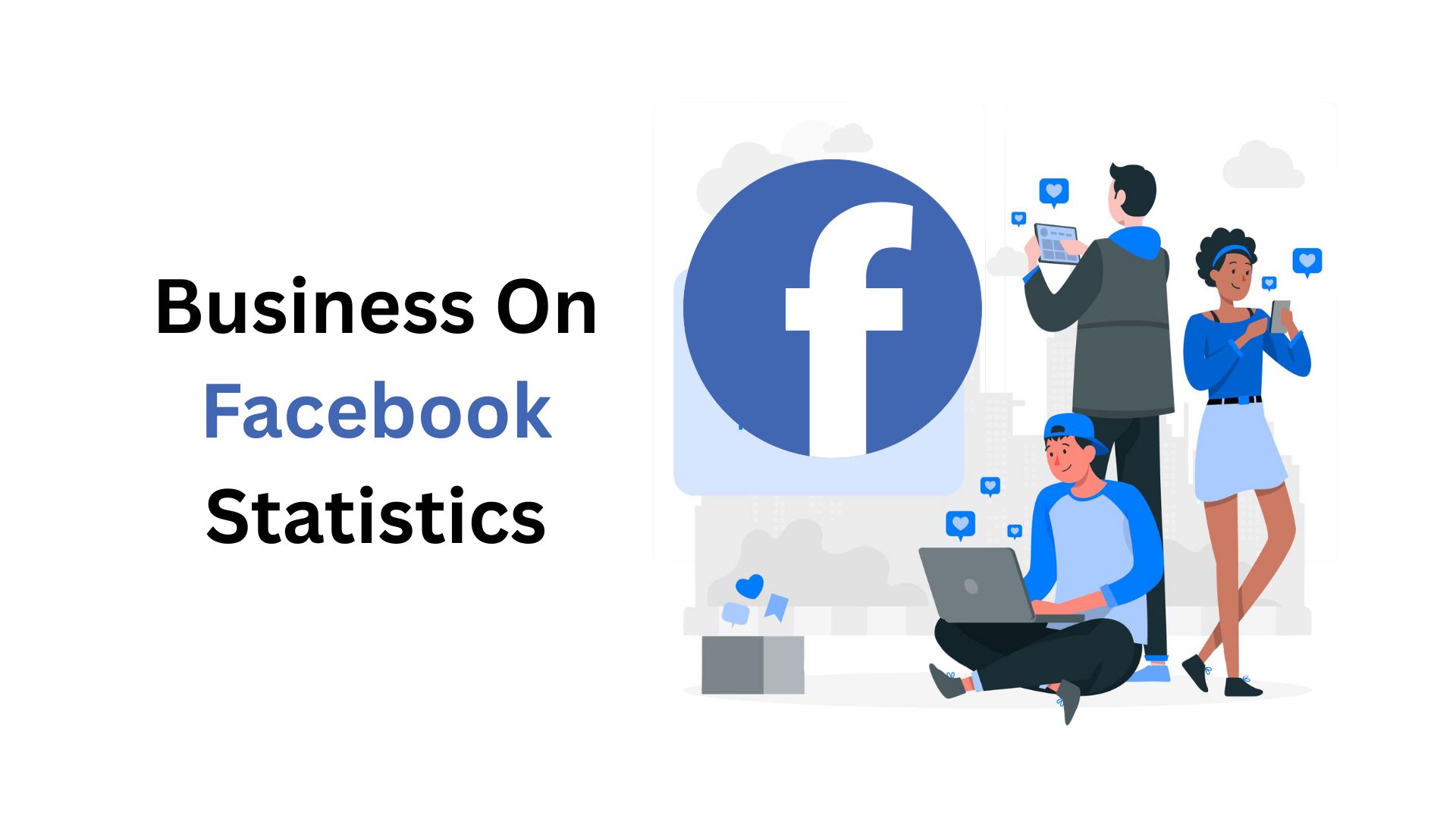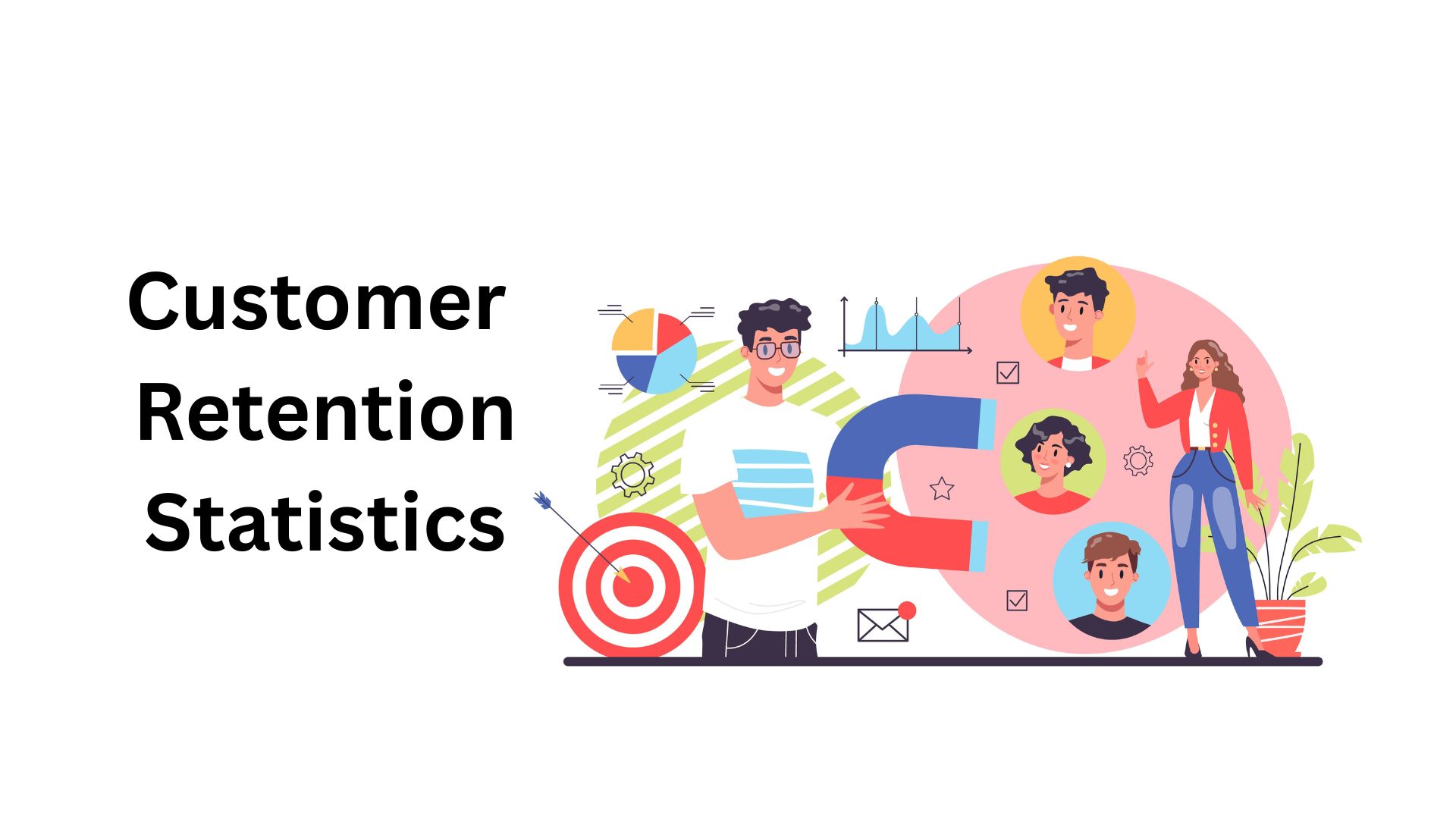Wasting Time At Workplace Statistics By Wasted Time At Meetings, Distraction, Employee Reports, States And Wasteful Work-Related Tasks
Updated · Feb 17, 2025
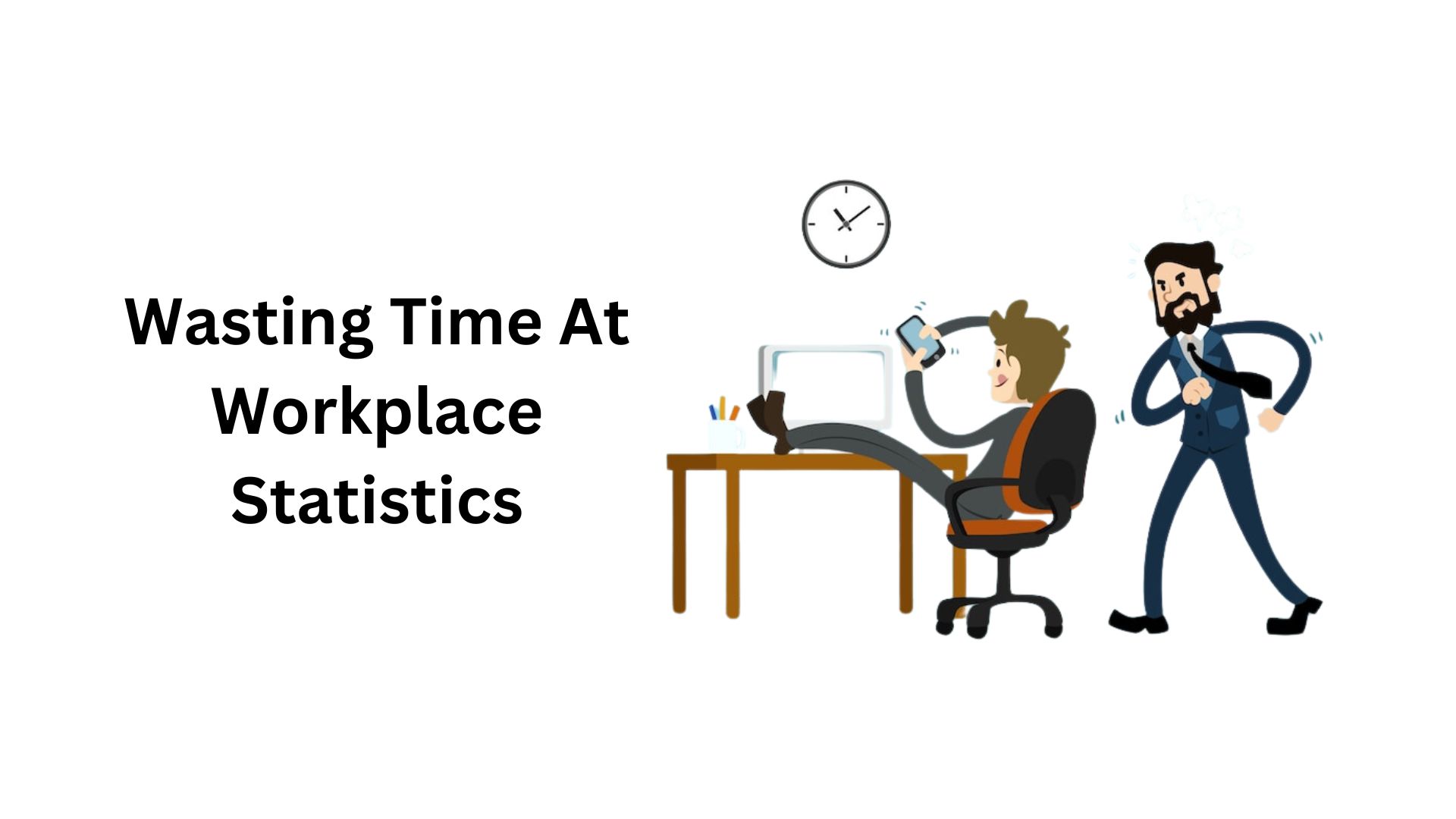
Table of Contents
- Introduction
- Editor’s Choice
- How Do We Waste Our Time?
- Wasting Time At Work By Wasted Time At Meetings
- Time Wasting By Spending Time On Non-work Activities
- Time Wasting At Workplace By Distraction
- Wasting Time At Workplace By Employee Reports
- Social Media Usage By Males & Females At the Workplace
- Reasons Behind People Wasting Time At Workplace
- Time Wasting At Workplace By States
- Wasting Time At Work Statistics By Wasteful Work-Related Tasks
- Enhancing Workplace Productivity By Reducing Time Wastage
- Conclusion
Introduction
Wasting Time At Workplace Statistics: The modern work environment is fast-paced, and time is one asset that is highly valued. However, a plethora of studies show considerable time wastage in workplaces across industries. Understanding the extent and reasons for the inefficient environment becomes critical for organizations that want to enhance levels of productivity and stave off a financial loss.
The article will discuss some of the surprising wasting time at workplace statistics and facts, including how to stop wasting time at work.
Editor’s Choice
- Wasting time at workplace statistics estimated that social media uses close to 1.5 working hours of an employee’s time every day, almost equating to a full workday lost during the week.
- Employees spend an average of 21 hours a week on Internet activities, accounting for 48% of their workweek.
- Gossip sessions or personal communication use about 56 minutes per day.
- Email checking interrupts normal workflow since employees check their emails an average of 121 times every day, which occupies 28% of an entire workweek.
- 47% of employees rate meetings as the biggest time-waster, with 21.5 hours spent in meetings on average weekly.
- Wasting time at workplace statistics reveal that U.S. companies spend close to US$37 billion a year on unnecessary meetings.
- About 19.6% of employees state they are completely productive, while 18.5% admit to wasting three or more hours a day on non-work activities.
- The leading distractions faced in the workplace are Internet browsing, 47%; social media, 45%; and texting, 44%.
- 89% of the employees in the survey said that they wasted work time for at least 30 minutes daily, whereas 16% stated that wasting two hours a day was the norm for them.
- 80% of employees thought that workplace interruptions were trivial; less than 60% thought that they were productive during the workday.
- Social media has different distraction areas for men and women. Female workers generally spend hours on Facebook, Instagram, and Pinterest, while male employees tune in to YouTube and Reddit most of the time.
- Wasting time at workplace statistics show that 53% of employees take a break for better productivity, while 20% think wasting time is because of boredom.
- Employees in different states of America would waste about 2.5-2.8 hours a day. This means billion-dollar losses in salaries annually.
- Employed individuals spend almost 21 days on activities that could well be automated in a year.
- Using up to nearly six hours every day managing emails, 3.5 hours are for work-related and 2.3 hours for personal emails.
- According to Wasting Time at Workplace statistics, U.S. corporations lose about US$1.7 million every year for every 100 employees through inefficiencies in the workplace.
How Do We Waste Our Time?
- Recent Wasting time at workplace statistics shows clear time wasters that impact productivity. Social media ranks high among these, costing an employee around 1.5 hours of work time a day, thus, about 7.5 hours a week.
- It seems that one whole day of work is wasted each week just on social networking. The internet, with all its merits, is another major way to fill the time.
- On average, employees spend 21 hours a week online, which means 48% of a work week is lost to the internet. Even with some restrictions enforced on selected websites, internet distractions just won’t go away.
- Personal communication through phone calls, text, or reading messages costs up to 56 minutes daily. This rounds up to nearly five wasted productivity hours over a standard workweek.
- Wasting time at workplace statistics state that workplace-email culture facilitates about 121 email checks per employee daily. This activity of frequent email access takes away almost 28% of the workweek.
- Poor training is yet another major dimension. A quarter of employees find their training worthless to their jobs.
- This inefficiency costs organizations millions of dollars every year. Workplace distractions, along with demotivation, provide an extra punch to the productivity gut.
- Distractions occur roughly every 11 minutes, but regaining concentration after is thoroughly exhausting-forfeiting nearly 25 minutes of a person’s workday.
- Equally, mundane, low-value activities waste time. Employees spend an entire workday every week doing repetitive tasks that are also easily automated, such as completing timesheets and generating reports.
- This contributes to nearly 50 lost workdays a year per employee, severely hindering overall productivity in the workplace.
Wasting Time At Work By Wasted Time At Meetings
- Wasting time at workplace statistics reveal that A significant 47% of employees consider meetings to be the biggest time-waster in the workplace.
- To make better use of their time, 73% of employees multitask by working on other tasks during meetings.
- However, this does little to alleviate the burden, as 45% still feel overwhelmed by the sheer number of meetings they are required to attend.
- Unnecessary meetings cost U.S. businesses approximately US$37 billion annually. This staggering amount comes primarily from salaries paid to employees for attending meetings that provide little to no value.
- This figure does not even account for additional expenses like snacks, office supplies, and meeting facilities. On average, employees spend about 21.5 hours per week in meetings.
- For particularly busy professionals, this number can rise to nearly 33 hours per week—taking up most of their 40-hour workweek, though these professionals typically work closer to 45-50 hours.
- Employees attend an average of 62 meetings per month, with most lasting around an hour.
- Given that nearly half of these meetings are deemed unproductive, this translates to 31 hours of wasted time each month in meetings that fail to contribute meaningfully to workplace efficiency.
Time Wasting By Spending Time On Non-work Activities
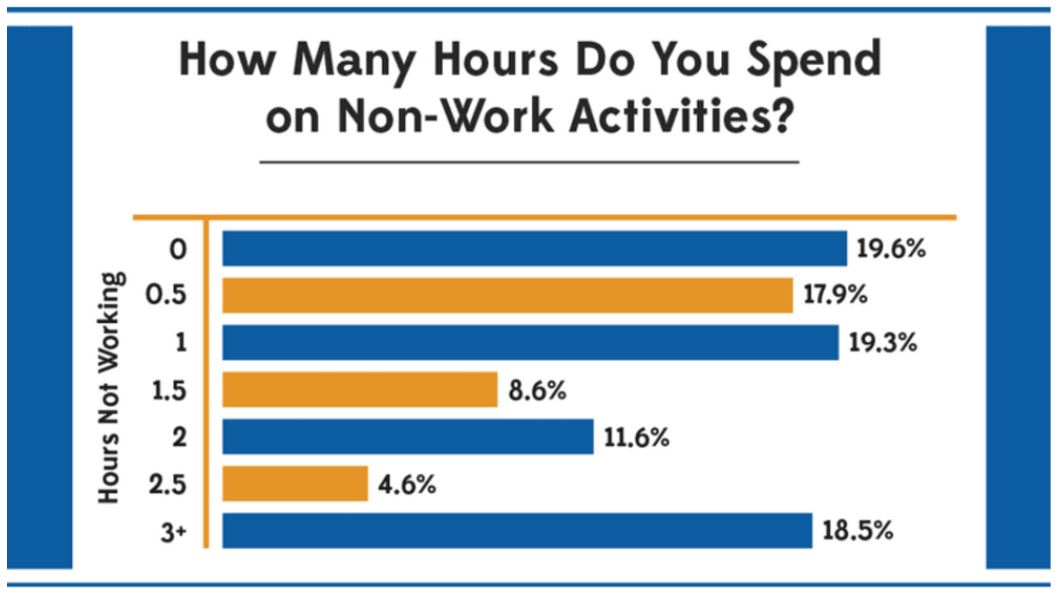
(Source: apploye.com)
- Wasting time at workplace statistics show that a large number of employees indulge in non-work activities throughout the day. While approximately 19.6% of workers declare that they do not waste any time at all and are fully productive during the day, 17.9% say they take 30 minutes for activities unrelated to work.
- About 19.3% of workers confess to wasting an hour a day; 8.6% say they engage in almost one and a half hours of distractions.
- Further, 11.6% of employees reported wasting at least two hours of their workday on unrelated activities, while 4.6% estimate spending around two and a half hours on such activities.
- A sizeable 18.5% of employees confessed to spending three or more hours a day on non-work-related activities, clearly indicating that quite a several workers spend a big chunk of their day on tasks other than those about their work.
Time Wasting At Workplace By Distraction
| Distracting Activity | Percentage of Employees Who Participate |
| Surf the internet | 47% |
| Social media | 45% |
| Texting | 44% |
| Bathroom breaks | 39% |
| Socialising with coworkers | 27% |
| Snack breaks | 25% |
| Other coworkers’/office noise | 25% |
| Coffee breaks | 19% |
| Reading/drawing | 16% |
| Household activities | 14% |
(Source: zippia.com)
- An entire workforce incorporates distracted and unproductive hours during work time.
- Wasting time at workplace statistics indicate that among those distractions, surfing the internet tops the list, with 47% of the numbers of employees revealing it as their most common distraction.
- Next on the opening line is 45% of workers who say they browse social media, followed by 44% on texting during duties.
- Of late, many employees seem to ask for a longer time to relieve their basic human needs, although 39% indicate taking extended bathroom breaks for personal use.
- Other casual aspects include social interaction, where it was found that 27% keep on engaging in incidental gossip with coworkers.
- Snack breaks alone take up 25%, and an equal number attributed it to the office noise or interruption from colleagues.
- Other times of consuming coffee breaks added to the 19% of workers who get away from their duty for caffeine.
- Activities drawing or reading consume working hours for many employees, with 16% of them admitting to such diversions. Another 14%, for example, spend working hours completing household chores.
Wasting Time At Workplace By Employee Reports
- 93% of employees admit wasting at least 30 minutes of their working day.
- 16% of workers spend almost two hours every day on non-job related activities.
- 6% of employees acknowledge wasting nearly three working hours per day.
- 4% of workers admit to wasting four or more hours in a typical workday.
- 53% of employees take unofficial breaks to increase productivity at work.
- 20% of workers waste time because they are bored or find their work uninteresting.
- 80% of office interruptions are judged trivial by employees.
- In many cases, productive work tasks are not performed for even more than 60% of the workday.
Social Media Usage By Males & Females At the Workplace
| Social Network | Male (% usage) | Female (% usage) |
| 63 | 75 | |
| 31 | 43 | |
| 24 | 21 | |
| 29 | 24 | |
| 15 | 42 | |
| Snapchat | 24 | 24 |
| Youtube | 78 | 68 |
| Tiktok | 56 | 44 |
| 15 | 8 | |
| 21 | 19 |
(Source: jobera.com)
- Just like that, social media usage has also become an interesting ingredient that changes workplace productivity, although different platforms are reportedly occupied differently.
- Wasting time at workplace statistics state that Facebook draws the big guns with 63% of males and 75% of females.
- That is then followed by Instagram: 31% of male employees and 43% of female employees spend time engrossed in it at work. The balance of usage on Twitter accounts for about 24% of men and 21% of women.
- 29% of men and 24% of women have accessed LinkedIn, mostly an area for professional networking.
- Quite an eye-opener is Pinterest, as it is used by 42% of women while only 15% of men use it.
- Once again, Snapchat has equal usage, at 24% for both genders.
- Another significant source of distraction is YouTube, which, when it comes to male employees, sees 78% of them using the site, compared to 68% of women.
- Wherewith, TikTok made a base of users in short-form videos by accommodating 56% of men and 44% of women using it.
- Reddit sees less attraction in the workplace: only 15% of men and 8% of women use Reddit. WhatsApp, classified as a messaging platform using messages, is used privately as well as for office work by 21% of men and 19% of women.
- Thus, these figures depict how social media forms an intrinsic part of distractions in the workplace for both genders, although the difference may be significant.
Reasons Behind People Wasting Time At Workplace
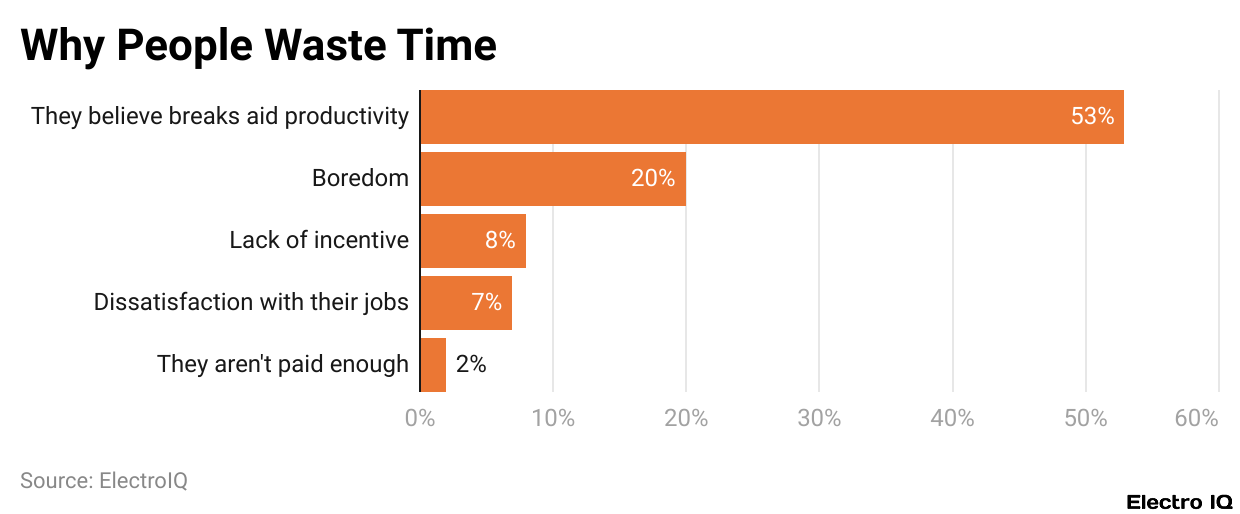
(Reference: clockify.me)
- Wasting time at workplace statistics reveal that of all the reasons why employees waste time in the office, the most popular excuse for dabbling in non-work activities and getting productive is “taking breaks”, according to 53% of workers.
- Also, 20% of them cite boredom as the main reason they waste time, indicating a disinterest in the task at hand.
- A small group of employees (8%) claims that their lack of productivity during work hours is due to a “lack of motivation” or “incentives to work.”
- Yet another group of 7% admits that “job dissatisfaction” has been a reason for wasting time at work.
- Finally, 2% report that they do not get paid enough to work hard while on the job.
- Such observations highlight the psychological and workplace factors influencing employee productivity and time management.
Time Wasting At Workplace By States
| States | Time Wastage (per day) | Salary Wastage (per year) |
| Indiana | 2.8 hours | USD 25.1 billion |
| Kentucky | 2.8 hours | USD 15.4 billion |
| Wisconsin | 2.8 hours | USD 23.8 billion |
| Nevada | 2.7 hours | USD 9.8 billion |
| Oklahoma | 2.7 hours | USD 12 billion |
| Virginia | 2.7 hours | USD 29.0 billion |
| Pennsylvania | 2.6 hours | USD 43.0 billion |
| Connecticut | 2.5 hours | USD 11.8 billion |
| Idaho | 2.5 hours | USD 4.2 billion |
(Source: coolest-gadgets.com)
- According to Wasting time at workplace statistics, Different U.S. states vary considerably in waste of time at the workplace, leading to massive amounts of money lost per employer.
- The 2.8 hours a day wasted on average in Indiana, Kentucky, and Wisconsin costs employers USD 25.1 billion, USD 15.4 billion, and USD 23.8 billion in salary loss, respectively.
- Using almost 2.7 hours a day on non-work-related activities are said employees in states like Nevada, Oklahoma, and Virginia.
- This translates to lost salaries of USD 9.8 billion in Nevada, USD 12 billion in Oklahoma, and USD 29 billion in Virginia.
- Slightly lower, with 2.6 hours per day, is Pennsylvania, but with its huge workforce, this converts to a projected USD 43 billion or so in lost salaries each year.
- Workers are also wasting 2.5 hours a day in Connecticut and Idaho, which results in losses to their employers of USD 11.8 billion and USD 4.2 billion, respectively, over a year.
- So, it’s a classic case of generalized time-wasting practices across states having a cumulative bearing worth billions in losses to businesses annually.
Wasting Time At Work Statistics By Wasteful Work-Related Tasks
- 21 days are spent by employees each year performing redundant or menial tasks that can easily be automated at a cost of significant money to companies.
- According to Wasting Time at workplace statistics, office workers, on average, spend nearly 3.5 hours a day monitoring work-related emails. Access to personal emails, on average of 2 hours and 23 minutes, makes close to six hours spent daily just for email management.
- This time, wastage generates very high monetary losses to companies. In every 100 employees, about US$1.7 million is lost annually by U. S. companies due to unproductive activities.
- This lost cost increases proportionately to the size of the company, which means that any business employing about 300 employees would likely lose approximately US$5.1 million annually.
- Though a lot of wasted time is due to personal distractions or socializing, companies are also partly responsible for such inefficiencies by organizing excessive meetings and the way they communicate via ineffective emails.
- Putting those efficiencies right can bring millions of savings to such businesses.
Enhancing Workplace Productivity By Reducing Time Wastage
- Boosting productivity and reducing time wastage in the workplace requires action from both employees and organizations.
- Employees can take personal responsibility by monitoring their output, while companies can implement structured protocols to streamline workflows and thereby increase efficiency.
- One of the good ways to enhance productivity includes reassessing workplace communications. Clear and structured dialogue helps immensely in avoiding distractions.
- According to the studies, 84% of employees leave their email inboxes open all day, while a stunning 70% of emails are opened within six seconds of their arrival.
- An employee, on average, tends to be checking email every six minutes, often feeling the pressure to respond immediately owing to the corporate culture.
- Improved communications with a focus on reducing unnecessary email interruptions would allow employees to concentrate better on the tasks they find valuable.
Conclusion
According to Wasting time at workplace statistics, we still waste some amount of time in the workplace, irrespective of the efforts we undertake. It is human. The everyday distractions we know include but are not limited to chatty coworkers, meetings, and vague priorities. The roots of these problems must be discovered, and solutions must be devised.
Meaningful, practical ways of minimizing time-wasting will make companies profitable and, at the same time, create a more engaged, effective, and focused workforce.
FAQ.
Time-wasting activities are as follows: internet browsing (47%), use of social media (45%), texting (44%), long bathroom breaks (39%), and chatting with coworkers(27%). In addition to that, unnecessary meetings and overchecking of emails are big contributors to workplace inefficiency.
Approximately 89% of all employees claim to waste at least 30 minutes of each workday on activities outside the office. The minority, or 16%, says they spend about two hours on non-work affiliated tasks. Some will go as far as to deny doing any non-working activity while at work, with 4% confessing even four hours per workday or more being wasted.
47% of employees consider meetings to be time-wasting, with an average of 21.5 hours spent by employees per week in meetings, about half of which are viewed as unproductive. This unproductive meeting culture costs U.S. businesses an estimated US$37 billion a year.
Social media inactivity consumes work hours for 1.5 hours per employee every day, simply adding up to nearly a full workweek lost per week. Female employees appear to prefer Facebook, Instagram, and Pinterest, while male employees seem to prefer YouTube and Reddit.
Businesses can increase productivity by holding fewer meetings, improving email etiquette, automating repeated tasks, and promoting structured workdays. By instilling employee motivation and involvement, business firms can enhance concentration and minimise distractions that hamper efficiency.

Maitrayee Dey has a background in Electrical Engineering and has worked in various technical roles before transitioning to writing. Specializing in technology and Artificial Intelligence, she has served as an Academic Research Analyst and Freelance Writer, particularly focusing on education and healthcare in Australia. Maitrayee's lifelong passions for writing and painting led her to pursue a full-time writing career. She is also the creator of a cooking YouTube channel, where she shares her culinary adventures. At Smartphone Thoughts, Maitrayee brings her expertise in technology to provide in-depth smartphone reviews and app-related statistics, making complex topics easy to understand for all readers.




